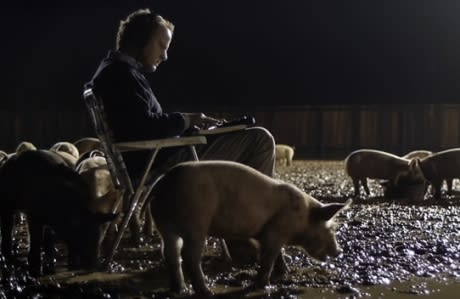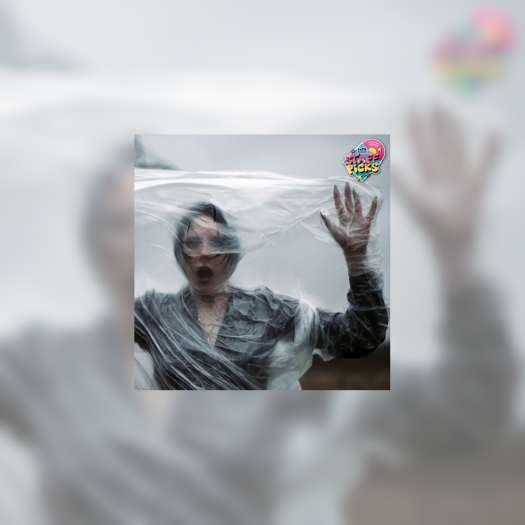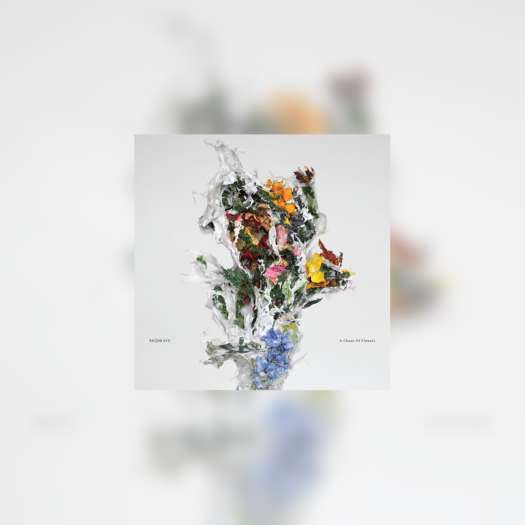Nine years ago, Shane Carruth's ambitious, wilfully oblique Primer (an oblique, tersely constructed assertion of mathematics and time travel as a projection of individual identity) puzzled and intrigued audiences, opening itself to intense scrutiny and analytical interpretation. Various metaphorical and scientific assertions were projected onto the speculative text — something exacerbated by the ascetic, emotionally detached formalism of Carruth's direction — making it an abstract work of cult status, a film used by convergent thinkers to encapsulate their sense of self.
This is why his similarly elliptical, but stylistically antipodal follow-up, Upstream Color, has been met with such a polarized response: dismissed by those that perceive the abstract and confounding as a criticism of self, yet embraced by those intrigued by an expressionistic, lyrical approach to communicating the human experience.
It's a marked, even pointed departure from auteur conceits, concerning itself with the same metaphysical void of Primer while deliberately eschewing the muscular, cold assemblage in favour of a wildly colourful, experiential work of emotional purpose.
Its plot, fragmented into chapters of events that individually mean very little without the context of the bigger picture, follows a woman (Amy Seimetz) who is attacked and infected with a grub, or plant parasite, harvested for its ability to imprison a human within their body. Placing her in a trance-like state, it allows her assailant to exploit her as a puppet, depleting her bank account and giving up her valuable worldly possessions.
But this genre riff is of little importance; Upstream Color infuses these events with a melodic, (mostly) dialogue-free sense of musicality. A soft, pastel palette and abrupt editing style focus on the emotional projection of the sounds and aesthetics, mirroring her plight with the choreographed, instinctual connection of children using the same grub as an experimental drug, fusing their unconscious together in respective anticipation, catching each other's punches and moving together with a natural, anticipatory ease.
This leads the film into its second chapter, which sees this woman unemployed and struggling, finding an unlikely romantic partner in a man (Carruth) with a similar, albeit veiled background. The grubs, which have since been surgically removed by a God-like figure — a farmer with an ear to the ground for the unifying hums and noises of the natural and industrial world — and transplanted into pigs, represent the eerie unspoken connection that people feel when they experience the unexplainable nature of love.
This worldly connectivity and the organic, yet inexplicable nature of entanglements push everything towards its conclusion. Maternal wails emerge from the humans when their host piglet babies suffer, living their brief moments of life in a stream, which flows into, and feeds, other organisms infected by grubs.
In a way, Carruth is constructing a theology, suggesting a simultaneously fatalistic and chaotic nature to the experience of living. But what makes this more than a mere attempt to fashion a pedagogical work of ideological propaganda is that he isn't suggesting specificities in beliefs. Rather than forcing a belief in a God or remaining implicitly, rigidly within the vacuum of science, he taps into the spirit of emotional connection, using his filmmaking style as a tool to reiterate the suggestion of unspoken shared cognizance.
As such, Upstream Color is a work that is better felt and sensed than it is deconstructed and forced into an existing category of human beliefs. Every moment is riddled with intense meaning and purpose, but the intentions are grander than mere superficial analysis will allow.
(erbp)This is why his similarly elliptical, but stylistically antipodal follow-up, Upstream Color, has been met with such a polarized response: dismissed by those that perceive the abstract and confounding as a criticism of self, yet embraced by those intrigued by an expressionistic, lyrical approach to communicating the human experience.
It's a marked, even pointed departure from auteur conceits, concerning itself with the same metaphysical void of Primer while deliberately eschewing the muscular, cold assemblage in favour of a wildly colourful, experiential work of emotional purpose.
Its plot, fragmented into chapters of events that individually mean very little without the context of the bigger picture, follows a woman (Amy Seimetz) who is attacked and infected with a grub, or plant parasite, harvested for its ability to imprison a human within their body. Placing her in a trance-like state, it allows her assailant to exploit her as a puppet, depleting her bank account and giving up her valuable worldly possessions.
But this genre riff is of little importance; Upstream Color infuses these events with a melodic, (mostly) dialogue-free sense of musicality. A soft, pastel palette and abrupt editing style focus on the emotional projection of the sounds and aesthetics, mirroring her plight with the choreographed, instinctual connection of children using the same grub as an experimental drug, fusing their unconscious together in respective anticipation, catching each other's punches and moving together with a natural, anticipatory ease.
This leads the film into its second chapter, which sees this woman unemployed and struggling, finding an unlikely romantic partner in a man (Carruth) with a similar, albeit veiled background. The grubs, which have since been surgically removed by a God-like figure — a farmer with an ear to the ground for the unifying hums and noises of the natural and industrial world — and transplanted into pigs, represent the eerie unspoken connection that people feel when they experience the unexplainable nature of love.
This worldly connectivity and the organic, yet inexplicable nature of entanglements push everything towards its conclusion. Maternal wails emerge from the humans when their host piglet babies suffer, living their brief moments of life in a stream, which flows into, and feeds, other organisms infected by grubs.
In a way, Carruth is constructing a theology, suggesting a simultaneously fatalistic and chaotic nature to the experience of living. But what makes this more than a mere attempt to fashion a pedagogical work of ideological propaganda is that he isn't suggesting specificities in beliefs. Rather than forcing a belief in a God or remaining implicitly, rigidly within the vacuum of science, he taps into the spirit of emotional connection, using his filmmaking style as a tool to reiterate the suggestion of unspoken shared cognizance.
As such, Upstream Color is a work that is better felt and sensed than it is deconstructed and forced into an existing category of human beliefs. Every moment is riddled with intense meaning and purpose, but the intentions are grander than mere superficial analysis will allow.




